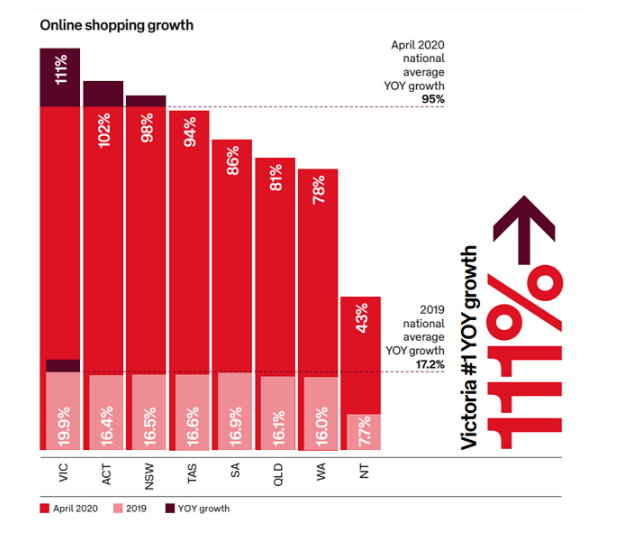You might have heard a bit, or a lot, about dropshipping in recent years. Dropshipping as a whole is expected to register a Compound Annual Growth Rate of 28.8% across the period of 2019 to 2025.
Dropshipping is a business model in which goods are shipped directly to a consumer from a third party rather than from the seller/dropshipper. Dropshippers, therefore, do not need to own their own stock.
This model comes with a number of benefits. The most obvious is the ability to skip any stock holding expenses. Since the average cost per order from Australian shipping fulfilment companies is $5, the costs saved here can be very significant. Cutting this cost also allows entrepreneurs to begin selling more quickly and with less risk.
With extensive benefits to offer, you might be wondering how to start a dropshipping business in Australia. Alternatively, you might just want to know more about how it works. You might even be wondering, “is dropshipping legal in Australia?”
Whichever stage you’re at, this complete guide is going to answer any questions you could have and accelerate your success with dropshipping as we head into the future.
What is dropshipping and how does it work?
Before learning how to start a dropshipping business in Australia, it’s important to understand dropshipping as a model and how exactly it operates.
What is dropshipping?
The best way to understand dropshipping is to imagine an e-commerce store in which the owner never owns or stores their stock. Instead, whenever a customer buys an item from online seller, they are buying it from the dropshipper’s virtual storefront.
The dropshipper/online seller is buying it from a third party that stores, packages and posts the item.
In essence, dropshipping means selling someone else’s products and taking a high portion of the profits.
How does the dropshipping business model work in Australia?
There are three stages to dropshipping in Australia, just as everywhere else across the globe.
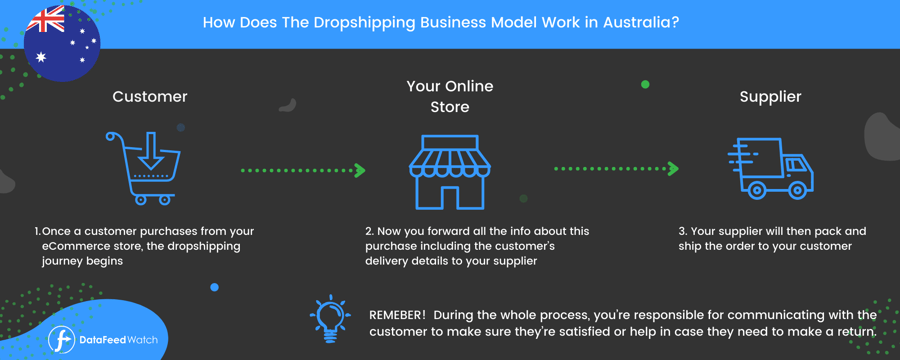
Why start a Dropshipping Business in Australia?
When it comes to e-commerce business models, unless you’re going to make your own products, you will either:
- hire a manufacturer to make your products,
- buy existing products from a wholesaler
- or choose dropshipping.
So, the question is why choose dropshipping?
Well, to start with, unless you have a very clear vision for your brand and your products and a lot of money to spare, choosing to go with a manufacturer will not be the best option. Manufacturers are not only more expensive than wholesalers, but require more vision on your part.
That leaves you with wholesale and dropshipping. The question then is which of these is better in Australia? We’d suggest dropshipping and here’s why…
Decreased Buying Pressure
When buying wholesale, purchases are almost always made in bulk. This means that businesses usually have to store a large amount of stock and, consequently, pressure to buy (particularly in the case of perishable items) is strong.
Increased Flexibility
Buying wholesale also prevents sellers from being flexible with what they sell. Because of buying in bulk, sellers have to stick to products that they are sure will sell over a span of time. They may, therefore, may miss out on opportunities to sell trending products which can bring in large amounts of money in a short space of time.
Decreased Risk
Dropshipping is lower risk because you don’t have money tied up in stock. It also allows you to experiment more. You can try different products and see what sticks.
Is dropshipping worth it?
Because dropshipping can take a bit of experimentation, many who are considering the model will ask, “Is it worth it?” Is it worth the time and effort it takes to find the right supplier? Is it worth the amount of product research it might take?
In short, yes. If you have a little time to invest in finding a profitable niche and creating a unique brand, you’ll find that dropshipping is worth it.
Crafting a brand is more difficult as a dropshipper, but it’s certainly doable and, with all your time freed up by not having to figure out fulfilment logistics, you’re able to spend more time on branding and marketing anyway!
Since the average e-commerce conversion rate stands at 2.12%, you only have to do some quick maths to work out that dropshipping can be incredibly profitable. Imagine 2 out of every 100 people who visit your store are buying something from you.
In this scenario, you’ve covered your marketing costs properly. Because of the lack of overheads, you should be able to make a high profit on each sale made from dropshipping.
Having less control over the supply chain will not be for everyone. But those who are happy to build a relationship with their suppliers and oversee operations from a distance will find that dropshipping solves a lot of the traditional issues of e-commerce.
To further the point, more Australians are shopping online than ever before. There’s never been a larger market for you to tap into, nor a better time to start dropshipping in Australia.
Dropshipping Australia: Pros & Cons
With that said, you’ll likely want to review this summary of the pros and cons of dropshipping before you decide whether it’s right for you.
Dropshipping Pros:
- Low initial investment
Dropshipping offers lower startup costs and a faster startup logistically. Technically, you can start dropshipping with $0 in the bank, but experts recommend that $299 should cover the basics.
- No inventory storage expenses
Dropshipping completely eliminates inventory expenses and carrying costs and minimizes overall fulfilment expenses
- Product marketing focus
When dropshipping, you don’t have to worry about stock control and you can focus instead on other aspects of your business. This can give your marketing real acceleration and, in turn, produce more sales.
- Low-risk
- Scalability
It is also scalable. If you want to expand your offering or offer more of the same thing, you simply order more from your supplier or find a different supplier if the original runs out.
You don’t have to look for extra storage space and figure out the logistics of handling extra stock.
Dropshipping Cons:
- Limited profit margin potential
When you buy products wholesale, you will most often get a more heavily discounted rate because you’re buying larger quantities. Because your cost per item becomes less, your profit margin per order becomes higher.
- Competition is fierce
In all likelihood, you will not have an exclusive relationship with your supplier. This means that you have to try harder to sell products that are likely being sold elsewhere too.
- No control over supply chain
In the dropshipping model, you have little control over the supply chain. Delays, returns, and quality assurance are all things that you will be held responsible for, but you can only liaise with your supplier in order to ensure this.
- Shipping might get tricky
Shipping can be complicated. If a customer buys from three different suppliers, for example, you’ll have to pay three different fees.
- Building a brand gets tougher
With dropshipping, it can be harder to build a brand. Customers tend to focus on the branding on the package they receive and this will obviously not be your own branding. It is still possible, however, to build a brand when dropshipping.
The Australian Dropshipping Market: Top Suppliers
How to find dropshipping suppliers:
The first step to finding dropshipping suppliers will be to consider whether you want to look domestically or overseas.
The huge number of overseas dropshipping suppliers is both a blessing and a curse:
+ choice is great when you’re choosing which products to sell,
- but the process of searching can become very time-consuming.
Throw in language barriers and time zone differences and you have a fairly complex supply chain. You might find slightly lower costs overseas, but this is balanced against higher shipping fees, clearance and customs brokers to deal with.
In order to avoid all this, you’ll likely choose to focus on an Australian supplier. The entire process from order to delivery will occur domestically, shortening the supply chain and making quality assurance checks much easier.
3 Main Ways to find dropshipping suppliers in Australia
When looking for dropshipping suppliers, Australia offers an extensive number of high quality options. Choosing from them is where the challenge can arise.
There are 3 main ways to find dropshipping suppliers in Australia.
#1 Check directories.
Sites such as Australian Dropshippers Directory and Australian Dropshippers are great
for that.
#2 Reach out to the manufacturer
If you know which products you want to sell, you can contact the manufacturer and find out which dropshipping companies stock them.
#3 Check social media groups and forums.
There are a lot of platforms for online sellers to get together and discuss issues, but there will also be groups for your particular product niche. Many dropshipping suppliers operate only in a particular niche and this is a great way to find them.
5 Best Dropshipping Suppliers & Wholesalers in Australia
When choosing dropshipping suppliers, Australia has a few general item suppliers that you shouldn’t skip over. These suppliers don’t operate in just one niche, so can be great for a range of dropshippers.
Offers a wide range of trending products from speakers to kitchen gadgets. They pride themselves on their easy return process and 100% money back guarantee.
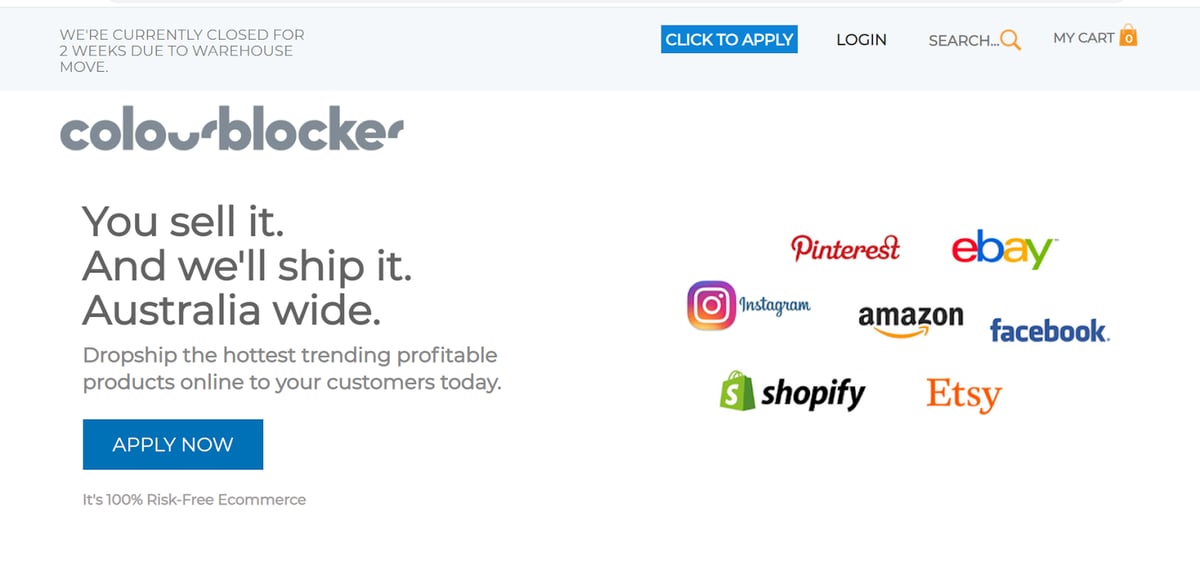
Offers a range of products from fitness equipment to garden furniture. They are super helpful as dropshipping suppliers and even provide an address book that streamlines the process of return orders.
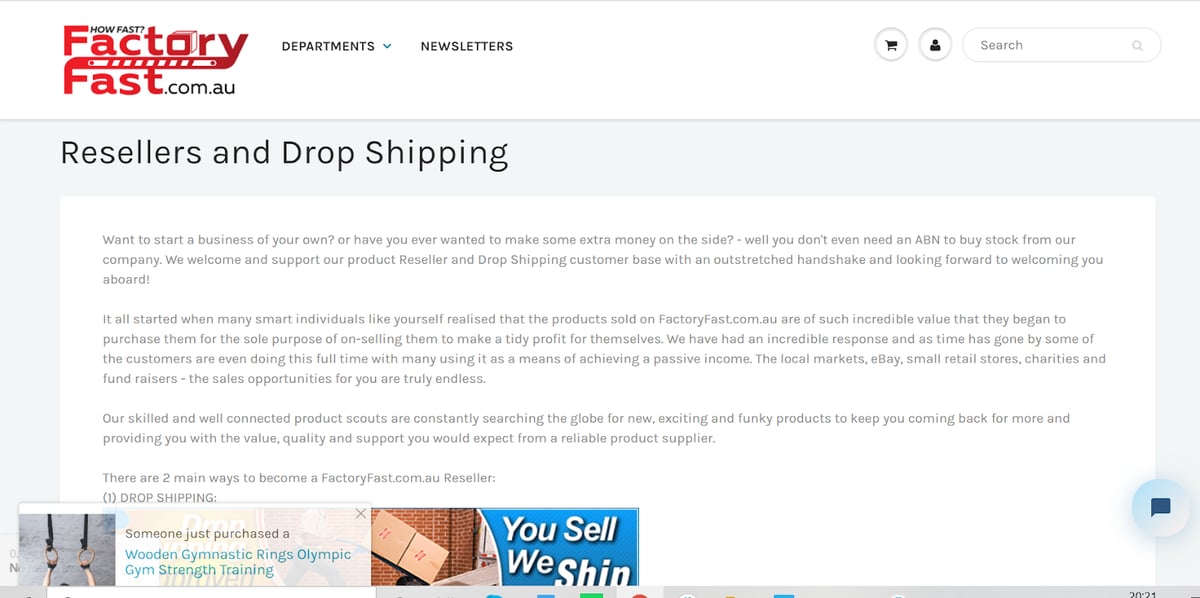
Operates internationally, providing a range of products in different niches fed through from AliExpress. However, it is their Australia-based storage spaces that make them great suppliers for online merchants across the country.

if you’re selling via a Shopify store, you should definitely check out Salehoo. They feed through thousands of products for you to choose to dropship and the process of selling is really easy because of the integration with Shopify.
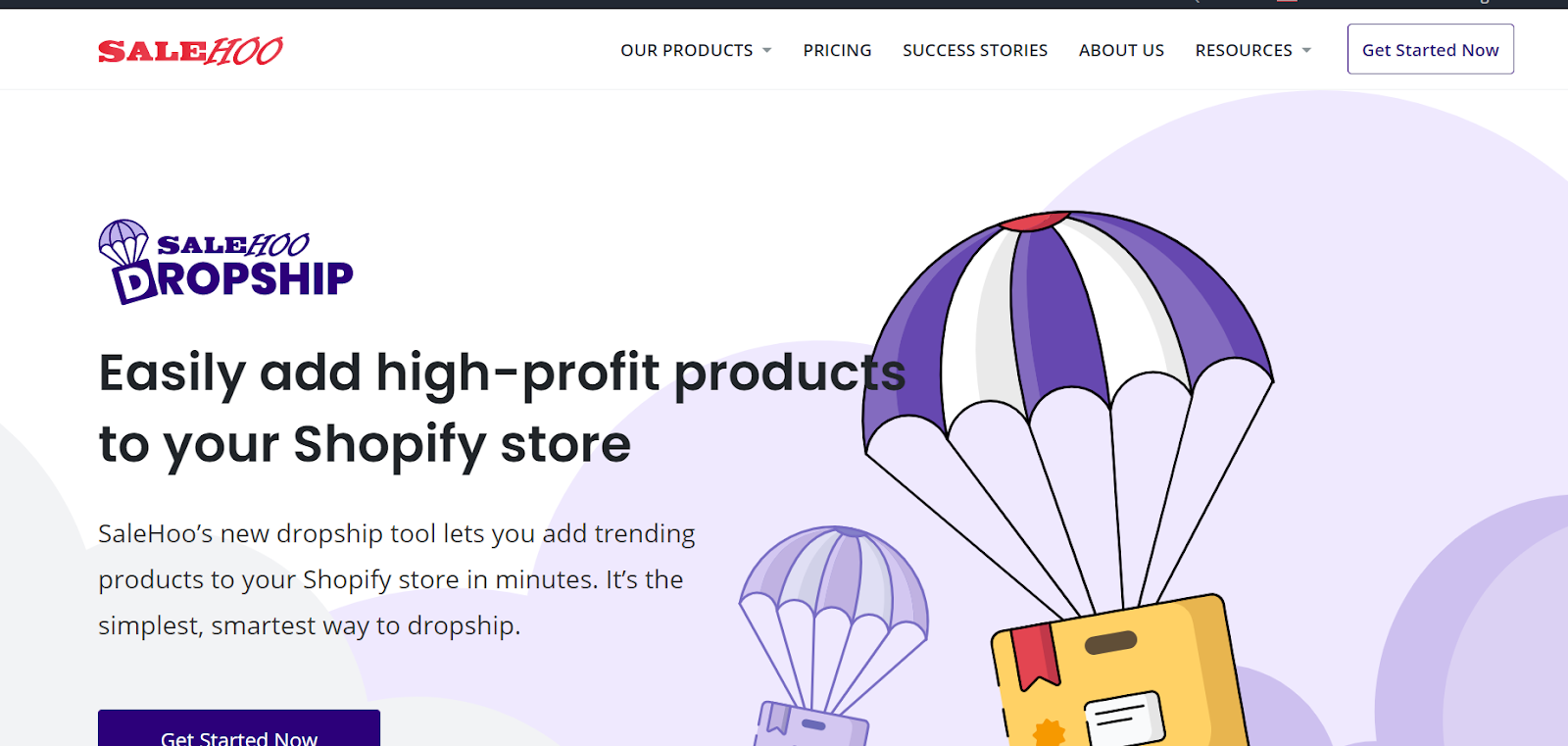
Focuses more on fashion and accessories, but with fashion proving to be one of the most profitable niches of 2021, this is a great place for any online seller to look.
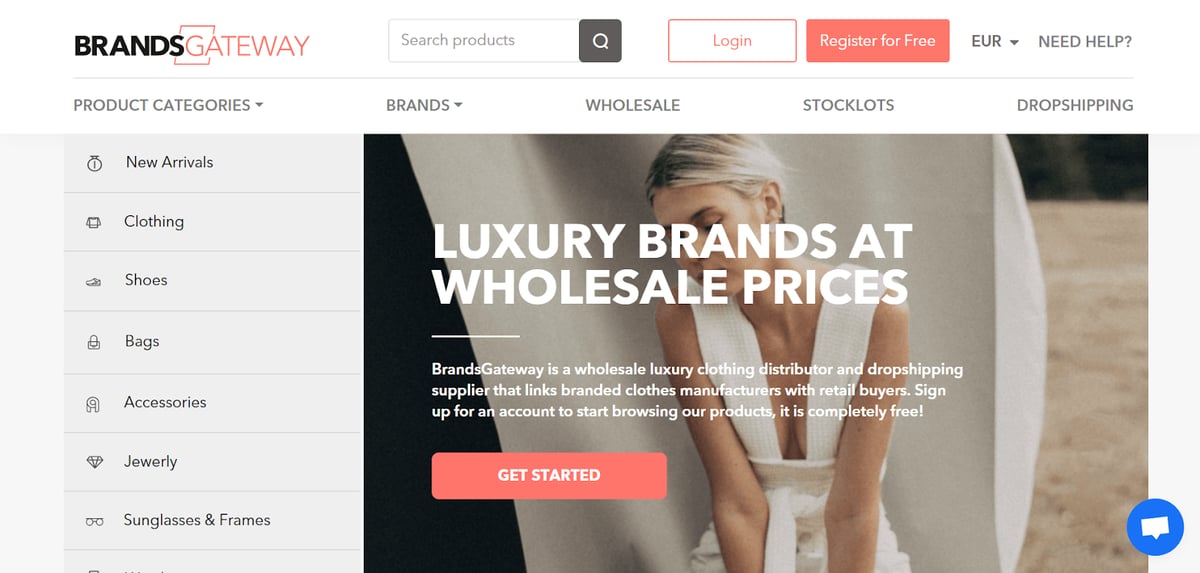
What Kind of Australian Dropshipping Suppliers Are Good for You?
When choosing between dropshipping suppliers, Australia presents a key locational-based criteria. Choosing suppliers that can handle imports and other related issues is key if you’ll be looking to ship internationally because Australian customs processes can be complex.
It’s also important to focus on suppliers that have high quality product control methods, order monitoring and strong processing methods.
How to Get Started With Dropshipping in Australia
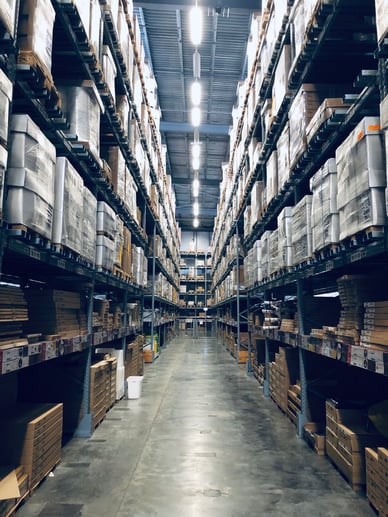
Once you’ve chosen a supplier, these are the steps and strategies you need to implement:
1. Find Your Products
- Figure out your niche
- Some of the niches following the breakout of COVID that are likely to stick for a while are: pet supplies, kitchen supplies, and home gym equipment. However, this is by no means an extensive list.
- You can also research trending products using Google Trends
- When you’re just starting out with dropshipping, it might be best to avoid high maintenance products - for example, any large products that require extra fees for storing
2. Familiarise Yourself With The Costs
The main costs you will face when dropshipping in Australia are:
- Subscription fees to domains or platforms like Shopify.
- Any costs you pay your suppliers via epayables or other means.
- GST ( Goods and Services Tax) is a 10% tax added to sales of goods. In Australia, import costs work so that if Australian consumers generate your online store $75,000 or more, you must charge GST for all the products you sell.
- Any shipping fees. To find out more about dropshipping to Australia vs. dropshipping internationally read to the end of the article.
3. Register Your Dropshipping Business
Registering your dropshipping business involves:
- Coming up with a name and domain name. Choosing the right name is key to establishing your brand and standing out in an overcrowded market. If you are going to operate in a specific niche, be sure to pick something search engine friendly by focusing on the keywords.
- Choosing a hosting provider. You can either run your own site through Wordpress and some great marketplace themes or choose a platform like Shopify which automates the process.
- Coming up with a brand concept. When it comes to branding a logo is important as are key colours, but try to think beyond this and more into customer experience. What do you want your target audience to associate your brand with?
- If you don’t want to sell via an online store, you can still dropship through Amazon, eBay, Shopify, etc. Amazon is currently the most popular of these options for buyers. For more information about selling on Amazon, check our guide.
- Make sure to register for an Australian Business Number (ABN) too. You can begin your application here.
4. Start Implementing SEO
Whether you choose to build a site or to optimize for marketplaces like Amazon, you’ll also want to implement SEO. SEO will ensure that you rank in searches relating to the products you sell and will boost your conversion rates. For more on optimizing your product page SEO here. If you decide to build your own website you should remember about monitoring its quality regularly, in order to do that you can make use of a tool like this website grader.
5. Perfect Your Customer Service
- In order to stand out from the competition as a dropshipping business, customer service is key.
- In fact, when dropshipping in Australia, you cannot afford to have bad customer service. Recent research shows that 89% of consumers will stop buying from somewhere if they have a bad experience.
- Some ways to optimize your customer service are providing as much info as possible on delivery statuses, quickly responding to every message, and setting up a solid return procedure with your supplier.
6. Devise Your Marketing Strategy
- When it comes to a dropshipping marketing strategy, there are a number of options to choose from. You should decide your approach based on which channels are likely to hit your target audience. Social media ads might suit a younger audience, for example, while SEM or SEO would be ideal for generating local business.
- Be sure to add testimonials where possible.
- Attractive branding and a well-configured product feed will go a long way. Visit our previous article if you want to find out more about optimizing your product feed.
The Easiest Way to Start Dropshipping in Australia
With all of this in mind, dropshipping in Australia can seem overwhelming. If you want to get started quickly, the easiest way is to start dropshipping with Shopify. It will help you automate the entire process. 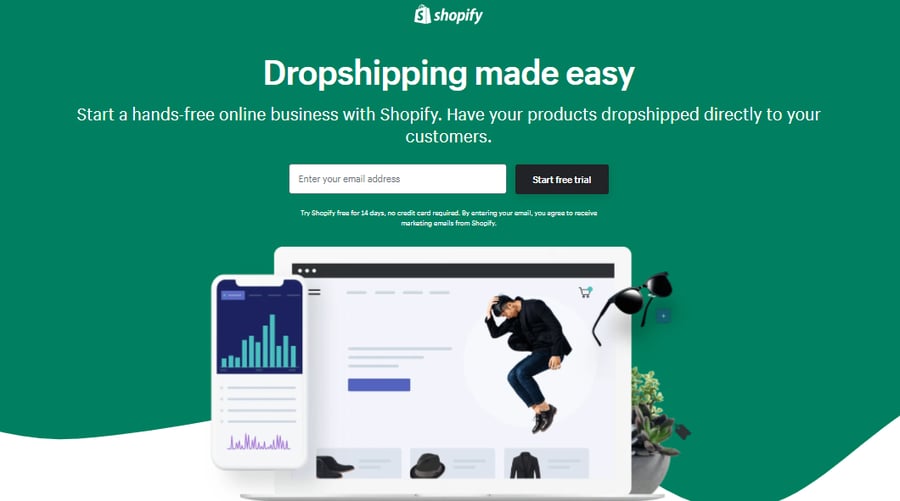
- Set up your Shopify account
- Choose your products through Shopify’s synced apps. Salehoo is compatible.
- Start marketing your store through the usual methods
- Fulfil and ship your orders
- Check back with Shopify’s extensive analytics.
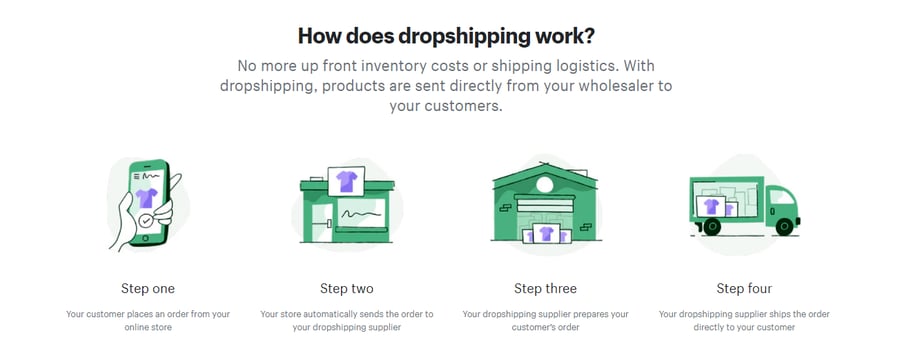
You may also find this interesting: Optimizing your Shopify product feed.
Dropshipping to Australia vs. dropshipping to other countries
No matter how quickly you want to set up your dropshipping business, you need to plan for the long term with regards to where you want to deliver to.
This will impact on not only which dropshipping suppliers you choose and how you set up your marketing strategy going forward, but how you set up your shipping fees. Shipping fees are somewhat of a make or break factor in dropshipping.
If you have adequately covered your shipping fees, you’ll make far more profit and be able to scale. However, you need to also remember that shipping fees should be set at a level that can compete with those offered by other sellers in your niche.
It’s worth doing some research on this once you’ve decided whether you will dropship to Australia or other countries.
Free shipping can be a great incentive when dropshipping to Australia if costs are covered in higher product prices. However, if you plan on shipping internationally, you will likely have to charge for shipping. You can either choose to charge what you pay or to offer a flat rate or tiered structure.
It is generally recommended that dropshippers do not adopt a “charge what you pay” structure since this makes it clear to the customer that it is a dropshipping model and may put them off from purchasing.
Whether you choose to go for flat rate or tiered shipping fees is up to you.
FAQ’s:
Is dropshipping legal in Australia?
So long as consumers meet the requirements of the Competition and Consumer Act, Australian Consumer Law and regular GDPR rules, dropshipping is completely legal in Australia.
What is Australian Consumer Law?
Australian Consumer Law protects the consumers right to receive their product in a state they deem acceptable and your necessity to refund the consumer by their request.
As a dropshipping business in Australia, you must accept full liability. You can read more about the law here.
What documents do you need for dropshipping in Australia?
You will need to keep a copy of your ABN and documents that show your adherence to consumer law.
Do you need a business licence for dropshipping in Australia?
While you don’t technically need a business license when dropshipping using platforms like Shopify, we always recommend that you acquire one. Having a business licence simplifies the process of paying taxes and adds legitimacy to your brand in the eyes of suppliers.
How do you register a dropshipping business?
All you need to do is visit the Australian Business Register and register from there.
Do you have to pay taxes on dropshipping in Australia? What taxes do you need to pay?
If your dropshipping business operates out of Australia, you need to pay taxes on whatever you sell. As well as income tax - which operates in the same way as if you were an employee of an organisation - you have to pay GST. GST is a 10% tax added to sales of goods.
In Australia, import costs work so that if Australian consumers generate your online store $75,000 or more, you must add GST to all the products you sell.
How do dropshipping suppliers’ contracts work?
A contract between supplier and dropshipping seller is called a dropshipping agreement. When drafting this agreement, you should include delivery standards, problem resolution and price agreements.
How does copyright work within dropshipping?
As an online seller, you need to be careful of which images you use on your site so as to avoid copyright infringement. Let's say you are selling a mug with a picture of a celebrity on it…
Many companies have trademarks on use of their logos and so you might not be able to post their images of the mug. What’s more, unless your supplier has followed copyright procedures properly, which oftentimes suppliers will not, you’re at risk.
You would be liable for this copyright infringement if you posted an image of the mug on your site and it turned out to be counterfeit. To avoid copyright issues as a dropshipper/online seller, you need to make sure you have the rights to use all the images that you use.
Alternatively, you can order one of the products yourself and take a picture of it. You should also be sure to research to make sure your supplier isn’t known for pushing counterfeit products.
